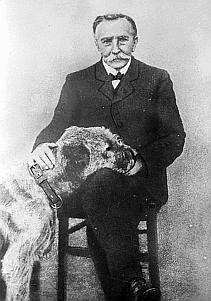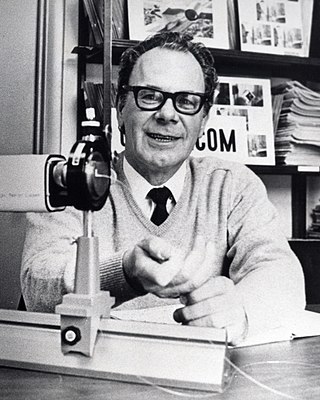
Thomas Alva Edison was an American inventor and businessman. He developed many devices in fields such as electric power generation, mass communication, sound recording, and motion pictures. These inventions, which include the phonograph, the motion picture camera, and early versions of the electric light bulb, have had a widespread impact on the modern industrialized world. He was one of the first inventors to apply the principles of organized science and teamwork to the process of invention, working with many researchers and employees. He established the first industrial research laboratory.

An invention is a unique or novel device, method, composition, idea or process. An invention may be an improvement upon a machine, product, or process for increasing efficiency or lowering cost. It may also be an entirely new concept. If an idea is unique enough either as a stand-alone invention or as a significant improvement over the work of others, it can be patented. A patent, if granted, gives the inventor a proprietary interest in the patent over a specific period of time, which can be licensed for financial gain.

Henry Woodward was a Canadian inventor and a major pioneer in the development of the incandescent lamp. He was born in 1832.

Emile Berliner originally Emil Berliner, was a German-American inventor. He is best known for inventing the lateral-cut flat disc record used with a gramophone. He founded the United States Gramophone Company in 1894.

This timeline of the telephone covers landline, radio, and cellular telephony technologies and provides many important dates in the history of the telephone.

A laboratory notebook is a primary record of research. Researchers use a lab notebook to document their hypotheses, experiments and initial analysis or interpretation of these experiments. The notebook serves as an organizational tool, a memory aid, and can also have a role in protecting any intellectual property that comes from the research.
Jerome "Jerry" Hal Lemelson was an American engineer, inventor, and patent holder. Several of his inventions relate to warehouses, industrial robots, cordless telephones, fax machines, videocassette recorders, camcorders, and the magnetic tape drive. Lemelson's 605 patents made him one of the most prolific inventors in American history.

Richard Gordon Gould was an American physicist who is sometimes credited with the invention of the laser and the optical amplifier.. Gould is best known for his thirty-year fight with the United States Patent and Trademark Office to obtain patents for the laser and related technologies. He also fought with laser manufacturers in court battles to enforce the patents he subsequently did obtain.
Within the context of a national or multilateral body of law, an invention is patentable if it meets the relevant legal conditions to be granted a patent. By extension, patentability also refers to the substantive conditions that must be met for a patent to be held valid.
An interference proceeding, also known as a priority contest, is an inter partes proceeding to determine the priority issues of multiple patent applications. It is a proceeding unique to the patent law of the United States. Unlike in most other countries, which have long had a first-to-file system, until the enactment of the Leahy-Smith America Invents Act (AIA) in 2011, the United States operated under a first-to-invent. The interference proceeding determines which of several patent applications had been made by the first inventor.
In United States patent law, the reduction to practice is the step in the formation of an invention beyond the conception thereof. Reduction to practice may be either actual or constructive. The date of reduction to practice was critical to the determination of priority between inventors in an interference proceeding under the discontinued first-to-invent system as well as for swearing behind a reference under that system.
First to file and first to invent are legal concepts that define who has the right to the grant of a patent for an invention. Since March 16, 2013, after the United States abandoned its "first to invent/document" system, all countries have operated under the "first-to-file" patent priority requirement.

The invention of the telephone was the culmination of work done by more than one individual, and led to an array of lawsuits relating to the patent claims of several individuals and numerous companies. Notable people included in this were Antonio Meucci, Philipp Reis, Elisha Gray and Alexander Graham Bell.
In patent law, an inventor is the person, or persons in United States patent law, who contribute to the claims of a patentable invention. In some patent law frameworks, however, such as in the European Patent Convention (EPC) and its case law, no explicit, accurate definition of who exactly is an inventor is provided. The definition may slightly vary from one European country to another. Inventorship is generally not considered to be a patentability criterion under European patent law.

The carbon microphone, also known as carbon button microphone, button microphone, or carbon transmitter, is a type of microphone, a transducer that converts sound to an electrical audio signal. It consists of two metal plates separated by granules of carbon. One plate is very thin and faces toward the speaking person, acting as a diaphragm. Sound waves striking the diaphragm cause it to vibrate, exerting a varying pressure on the granules, which in turn changes the electrical resistance between the plates. Higher pressure lowers the resistance as the granules are pushed closer together. A steady direct current is passed between the plates through the granules. The varying resistance results in a modulation of the current, creating a varying electric current that reproduces the varying pressure of the sound wave. In telephony, this undulating current is directly passed through the telephone wires to the central office. In public address systems it is amplified by an audio amplifier. The frequency response of most carbon microphones, however, is limited to a narrow range, and the device produces significant electrical noise.

A timeline of United States inventions encompasses the ingenuity and innovative advancements of the United States within a historical context, dating from the Contemporary era to the present day, which have been achieved by inventors who are either native-born or naturalized citizens of the United States. Patent protection secures a person's right to his or her first-to-invent claim of the original invention in question, highlighted in Article I, Section 8, Clause 8 of the United States Constitution which gives the following enumerated power to the United States Congress:
To promote the Progress of Science and useful Arts, by securing for limited Times to Authors and Inventors the exclusive Right to their respective Writings and Discoveries.

This history of the telephone chronicles the development of the electrical telephone, and includes a brief overview of its predecessors. The first telephone patent was granted to Alexander Graham Bell in 1876.

General Electric Research Laboratory was the first industrial research facility in the United States. Established in 1900, the lab was home to the early technological breakthroughs of General Electric and created a research and development environment that set the standard for industrial innovation for years to come. It developed into GE Global Research that now covers an array of technological research, ranging from healthcare to transportation systems, at multiple locations throughout the world. Its campus in Schenectady, New York was designated a National Historic Landmark in 1975.

The Leahy–Smith America Invents Act (AIA) is a United States federal statute that was passed by Congress and signed into law by President Barack Obama on September 16, 2011. The law represents the most significant legislative change to the U.S. patent system since the Patent Act of 1952 and closely resembles previously proposed legislation in the Senate in its previous session.

Dr. Marian Rogers Croak is an acclaimed American engineer who utterly transformed the capabilities of internet communication. Currently the Vice President of Engineering at Google, Croak's claim to fame was her revolutionary patent concerning Voice Over Internet Protocols (VoIP). This technology allows a person to make calls through Internet connection rather than a typical phone line, facilitating flexible and faster long distance communication globally. Prior to Google, Dr. Croak worked at AT&T and filed over 200 patents under her name. The prolific innovation of Dr. Croak shows her dedication to “reducing the barrier of entry to quality, affordable communication for the masses”. In 2022, she was inducted into the National Inventors Hall of Fame for her work with VoIP. She stated, "Many people think inventors have to be brilliant and off the charts in terms of their IQ, super smart and super academic in school and have gotten all A's, and that's not at all true. Inventors are usually people like you. Sometimes they're good at certain things, other times they're not, and that's ok. Just focus on what you want to change and you become that change and can make that change happen."